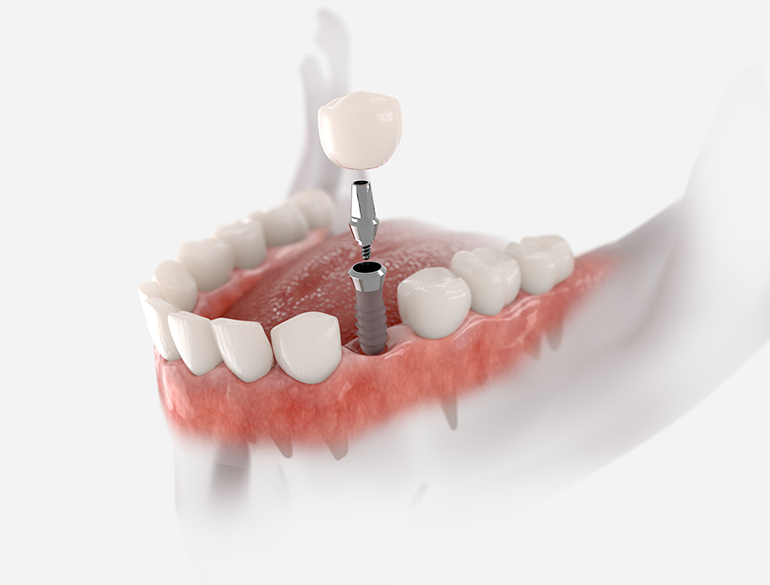What Does Dental Sense Mean?
What Does Dental Sense Mean?
Blog Article
The Buzz on Dental Sense
Table of ContentsDental Sense Fundamentals ExplainedMore About Dental SenseLittle Known Questions About Dental Sense.An Unbiased View of Dental Sense
are clinical gadgets operatively dental implanted right into the jaw to restore a person's capability to eat or their look. They offer assistance for synthetic (phony) teeth, such as crowns, bridges, or dentures. When a tooth is shed due to injury or illness, an individual can experience issues such as quick bone loss, defective speech, or changes to chewing patterns that result in discomfort.Dental implant systems include an oral implant body and oral implant abutment and might also include a joint fixation screw. Cosmetic dentistry services. The oral implant body is surgically inserted in the jawbone in place of the tooth's root. The dental implant abutment is normally connected to the implant body by the joint fixation screw and extends via gum tissues right into the mouth to support the attached synthetic teeth
(http://peterjackson.mee.nu/do_you_ever_have_a_dream#c2310)Structure of The Oral Implant System selecting dental implants, talk to your dental provider concerning the prospective advantages and risks, and whether you are a candidate for the procedure. Things to take into consideration: Your overall wellness is an essential consider determining whether you are a great candidate for oral implants, the length of time it will certainly require to recover, and for how long the implant may remain in place.
Smoking may influence the healing procedure and decrease the long-lasting success of the dental implant. The recovery procedure for the implant body may take a number of months or longer, throughout which time you typically have a short-term abutment in area of the tooth. the oral implant treatment: Thoroughly comply with the oral health instructions offered to you by your oral company.
Little Known Questions About Dental Sense.
Implant failure can result in the requirement for one more surgery to take care of or replace the implant system. Recovers the capability to chew Restores aesthetic look Helps keep the jawbone from diminishing because of bone loss Preserves the health and wellness of the surrounding bone and gum tissues Assists keep nearby (close-by) teeth stable Improves top quality of life Damage to bordering natural teeth throughout dental implant placement Injury to the surrounding cells during surgery, such as sinus opening Injury during surgical treatment (as an example, fracture of surrounding jawbone) Inadequate feature, such as really feeling like the teeth do not bite together generally An experience that the tooth is loose or twisting in location arising from a joint screw loosening up Implant body failure (looseness of the dental implant body) as a result of systemic infection, which might be more probable in patients with uncontrolled diabetics issues as a result of regional infection in bone and gum tissues supporting the implant body because of delayed healing, which might be more probable in patients that smoke Difficulty cleaning the periodontals around the dental implant, resulting in inadequate oral health Without treatment gum illness Post-surgical tingling as a result of nerve impingement or damage Always notify health treatment carriers and imaging professionals that you have oral implants before any type of magnetic vibration imaging (MRI) or x-ray treatments.
FDA is not mindful of any adverse events reported for MRI or x-ray treatments with oral implants. Oral implants systems are generally constructed from products that adhere to worldwide consensus requirements of the International Company for Standardization (ISO) or ASTM International. These criteria have information of what makes a secure material.

An oral implant is a framework that replaces a missing tooth. With screw-like tools, the surgeon inserts an implant into the jawbone, and it acts as an anchor for an artificial tooth, called a crown.
Fascination About Dental Sense
Some people are not qualified for dental implant surgical treatment. It is for dental surgeons to operate people with: acute illnessuncontrollable metabolic diseasebone or soft tissue illness or infectionIf these issues are dealt with, an individual can have the surgery. In, dental doctors avoid operating individuals with: If people with any of the above undertake dental implant surgery, there is a greater threat of the dental implant stopping working.

Oral dental implant surgical procedure is a customized process. It's not the very same for everyone. The adhering to gives a basic overview of what you can anticipate your dental practitioner, oral doctor, periodontist or prosthodontist to do: Put the dental implant operatively. Give you time to recover. Attach the article and last crown, bridge or denture.
Next off, your specialist will thoroughly put the oral implant right into your jaw. If your implant is near the front of your mouth, your dental expert will certainly make a temporary tooth for you to put on up until you recover.
Indicators on Dental Sense You Need To Know
Your copyright can tell you what to anticipate in your circumstance. During the recovery phase, your jawbone must fuse to the dental implant. This procedure, called osseointegration, is crucial for security and long-lasting success. This process can take anywhere from 3 to nine months. In some instances, it might take longer.
Once your dental implant heals, your dental professional can affix the abutment (small port article) and your final remediation (crown, bridge or denture). This normally takes concerning one hour to complete and might call for a second small surgical treatment. You shouldn't really feel any type of pain during your dental implant treatment since your copyright will certainly utilize medicine to numb your periodontals.
Report this page